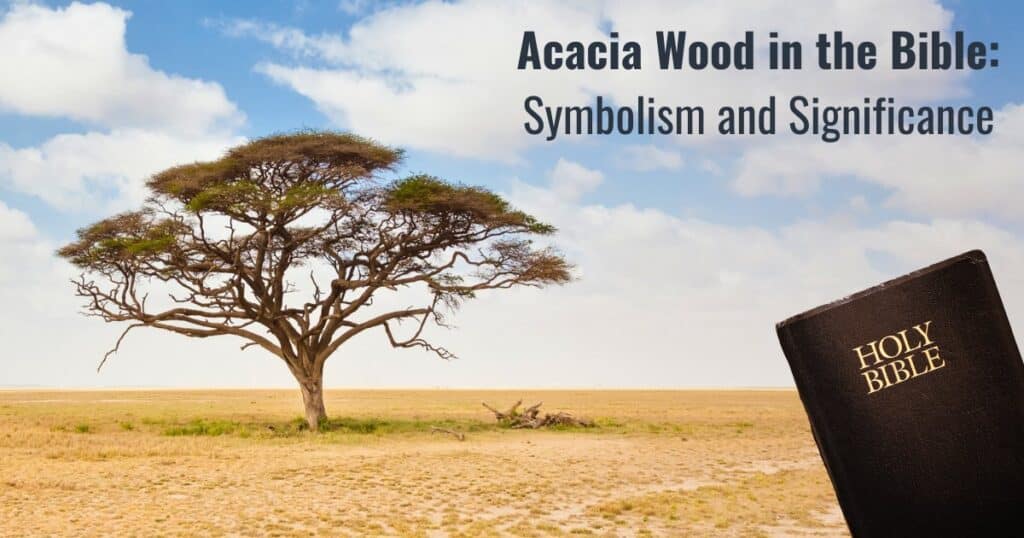Acacia wood holds a special place in the Bible, playing a significant role in the construction of various sacred structures and artifacts. Known for its durability and resilience, acacia wood is mentioned several times in the scriptures, where it is often associated with divine instructions for constructing important elements of worship. Let’s explore the symbolism and significance of acacia wood in the Bible.
Biblical References
The first mention of acacia wood in the Bible occurs in the book of Exodus, where God provides detailed instructions to Moses for the construction of the Ark of the Covenant. In Exodus 25:10-22, God specifies that the Ark should be made of acacia wood, overlaid with pure gold both inside and out. The Ark of the Covenant was a sacred container believed to house the tablets of the Ten Commandments, symbolizing God’s covenant with the Israelites.
Additionally, acacia wood is mentioned in the construction of the Tabernacle, a portable sanctuary used by the Israelites during their journey in the wilderness. In Exodus 26, God instructs Moses to use acacia wood for the framework of the Tabernacle, its posts, and crossbars. The altar of burnt offering and other sacred furnishings, such as the Ark’s carrying poles and the Table of Showbread, were also crafted from acacia wood (Exodus 27:1-8; 25:23-30).
Symbolism of Acacia Wood
- Durability and Resilience: Acacia wood is known for its durability and resistance to decay, symbolizing the eternal nature of God’s covenant with His people. The use of this wood in constructing sacred items underscores the enduring nature of divine promises.
- Purity and Holiness: The overlaying of acacia wood with pure gold represents the holiness and purity required in the presence of God. The combination of these materials serves as a visual reminder of the sacredness of the objects used in worship.
- Divine Instructions: The specific instructions given by God to use acacia wood highlight the divine precision and attention to detail in the construction of sacred structures. It emphasizes the importance of obedience to God’s commands in matters of worship and devotion.
- Portability: The use of acacia wood in constructing the Tabernacle and its furnishings also reflects the portability of the sacred space. This underscores the idea that God’s presence is not confined to a specific location but accompanies His people on their journey.
Conclusion
Acacia wood in the Bible is more than just a construction material; it carries deep symbolism and significance in the context of worship and divine presence. The careful use of this durable and resilient wood in crafting sacred items underscores the eternal, pure, and precise nature of God’s covenant with His people. As we delve into the biblical narratives, we gain insights into the rich symbolism associated with acacia wood, connecting the material world with the spiritual realm.
